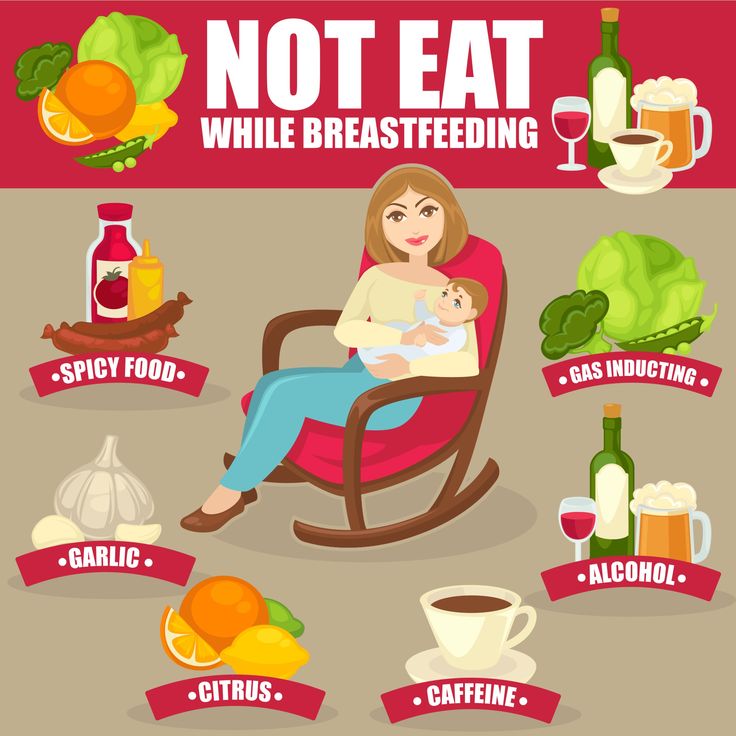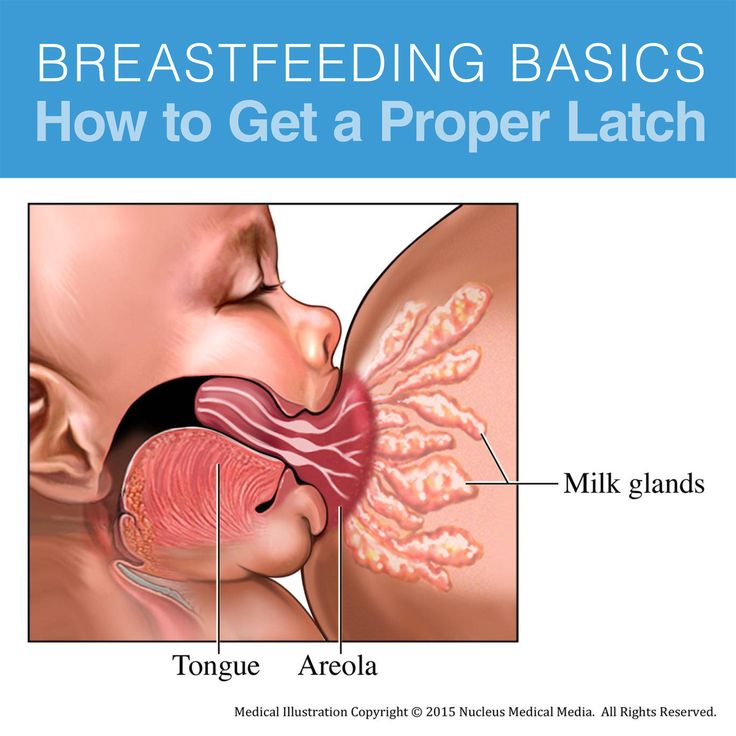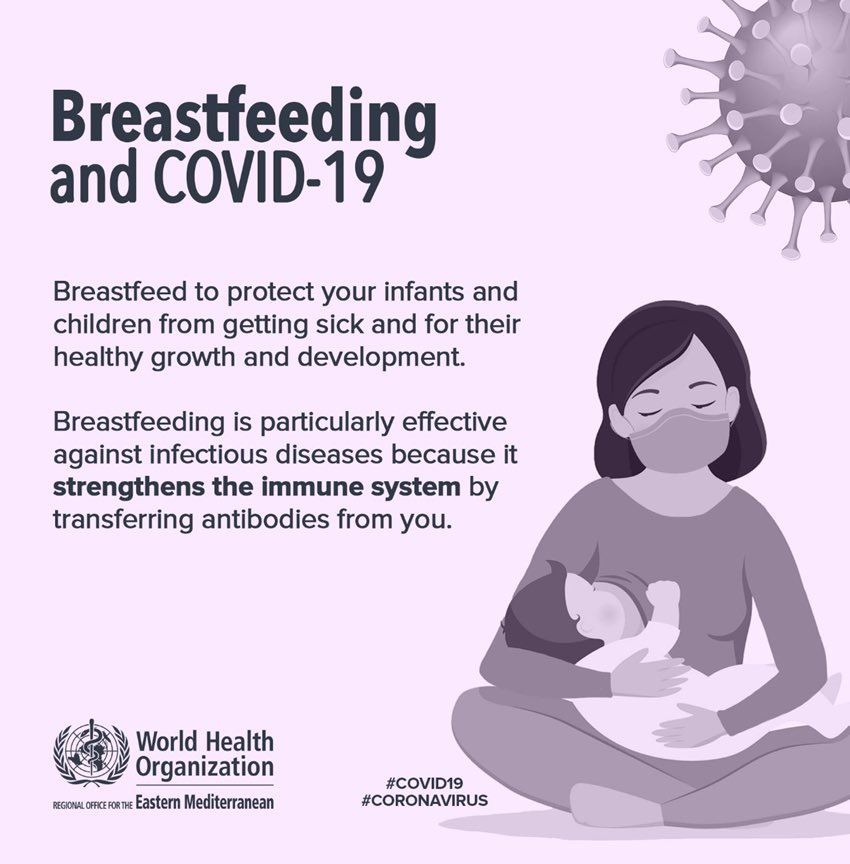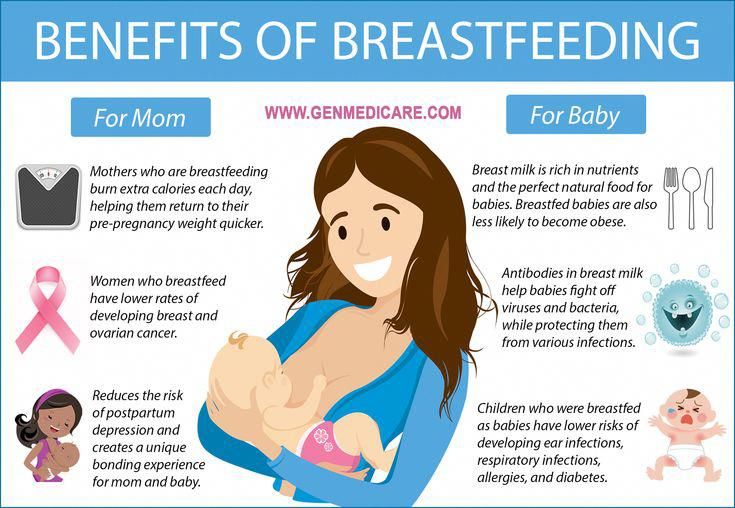Licorice while breastfeeding
Licorice - Drugs and Lactation Database (LactMed)
Last Revision: April 19, 2021.
Estimated reading time: 7 minutes
CASRN: 84775-66-6
Drug Levels and Effects
Summary of Use during Lactation
Licorice (Glycyrrhiza glabra) root contains glycyrrhizin (also called glycyrrhizic acid or glycyrrhizinic acid) and a mixture of the potassium and calcium salts of glycyrrhizic acid. Glycyrrhizin is metabolized to the active glycyrrhetinic acid in the intestine. Deglycyrrhizinated licorice (DGL) has had glycyrrhizin removed. Licorice is a purported galactogogue, and is included in some Asian proprietary mixtures to increase milk supply;[1] however, no scientifically valid clinical trials support this use. In fact, licorice usually reduces serum prolactin,[2] which might decrease milk production in the early stages of lactation. Women taking licorice have experienced elevated blood pressure.[3] Galactogogues should never replace evaluation and counseling on modifiable factors that affect milk production. [4,5] Some mothers in Turkey reportedly use licorice to improve the taste and quality of their milk.[6]
Glycyrrhizin is detectable in the breastmilk of some women taking licorice, but studies measuring glycyrrhetinic acid have not been performed. Licorice has been used safely and effectively in combination with other herbs given to infants as a tea for the short-term treatment of colic.[7] However, two infants whose mothers had an excessive intake of an herbal tea that contained licorice had signs of anethole toxicity.[8] Because both of these papers reported on herbal mixtures, the effect(s) of licorice alone cannot be determined. Licorice and licorice extract are "generally recognized as safe" (GRAS) as foods by the U.S. Food and Drug Administration. Long-term, excessive use of licorice can cause hypertension, hypokalemia, and disturbances of adrenal hormones, and therefore should probably be avoided during nursing.
Dietary supplements do not require extensive pre-marketing approval from the U. S. Food and Drug Administration. Manufacturers are responsible to ensure the safety, but do not need to prove the safety and effectiveness of dietary supplements before they are marketed. Dietary supplements may contain multiple ingredients, and differences are often found between labeled and actual ingredients or their amounts. A manufacturer may contract with an independent organization to verify the quality of a product or its ingredients, but that does not certify the safety or effectiveness of a product. Because of the above issues, clinical testing results on one product may not be applicable to other products. More detailed information about dietary supplements is available elsewhere on the LactMed Web site.
S. Food and Drug Administration. Manufacturers are responsible to ensure the safety, but do not need to prove the safety and effectiveness of dietary supplements before they are marketed. Dietary supplements may contain multiple ingredients, and differences are often found between labeled and actual ingredients or their amounts. A manufacturer may contract with an independent organization to verify the quality of a product or its ingredients, but that does not certify the safety or effectiveness of a product. Because of the above issues, clinical testing results on one product may not be applicable to other products. More detailed information about dietary supplements is available elsewhere on the LactMed Web site.
Drug Levels
Maternal Levels. Ten lactating women with breast engorgement were treated with the Kakkonto extract granules (Tsumura, [Juntendo, Japan]), which contains a mixture of various herb extracts, including licorice. The dose was 2.5 grams 3 times daily (about 400 mg daily of licorice extract). Glycyrrhizin was measured in the breastmilk at unspecified times. Glycyrrhizin was detected in 2 women at 1.14 mg/L and 0.15 mg/L, and in 3 women at <0.1 mg/L. It was undetectable in the remaining 5 women.[9]
Glycyrrhizin was measured in the breastmilk at unspecified times. Glycyrrhizin was detected in 2 women at 1.14 mg/L and 0.15 mg/L, and in 3 women at <0.1 mg/L. It was undetectable in the remaining 5 women.[9]
Infant Levels. Relevant published information was not found as of the revision date.
Effects in Breastfed Infants
Two breastfed infants, aged 15 and 20 days, were admitted to the hospital for a reported lack of weight gain in the previous 7 to 10 days, caused by "difficult feeding". The parents reported restlessness and vomiting during the past day. One of the mothers also reported feeling drowsy and weak. On examination, the infants were afebrile but had hypotonia, lethargy, emesis, weak cry, poor sucking and weak responses to painful stimuli. Infant laboratory values, electrocardiograms and blood pressures were normal, and septic work-ups were negative. Both mothers had both been drinking more than 2 liters daily of an herbal tea mixture reportedly containing licorice, fennel, anise, and goat's rue to stimulate lactation. After the mothers discontinued breastfeeding and the herbal tea, the infants improved within 24 to 36 hours. Symptoms of the affected mother also resolved rapidly after discontinuing the herbal tea. After 2 days, breastfeeding was reinstituted with no further symptoms in the infants. Both infants were doing well at 6 months of age. The authors attributed the maternal and infant symptoms to anethole, which is found in both anise and fennel; however, the anethole levels were not measured in breastmilk, nor were the teas tested for their content.[8]
After the mothers discontinued breastfeeding and the herbal tea, the infants improved within 24 to 36 hours. Symptoms of the affected mother also resolved rapidly after discontinuing the herbal tea. After 2 days, breastfeeding was reinstituted with no further symptoms in the infants. Both infants were doing well at 6 months of age. The authors attributed the maternal and infant symptoms to anethole, which is found in both anise and fennel; however, the anethole levels were not measured in breastmilk, nor were the teas tested for their content.[8]
Effects on Lactation and Breastmilk
A woman with a history of excessive licorice intake had amenorrhea, severe headaches, hypertension, hypokalemia. She had elevated serum prolactin levels that remained abnormal for one month after licorice discontinuation and normalized by 6 months after discontinuation.[10]
In a study of 25 men and 25 women, the baseline and thyrotropin-stimulated serum prolactin levels were measured to determine normal serum prolactin values. Subjects who regularly ingested licorice had lower basal and lower stimulated serum prolactin concentrations.[2]
Subjects who regularly ingested licorice had lower basal and lower stimulated serum prolactin concentrations.[2]
A traditional, nonstandardized decoction of peony and licorice roots called Shaoyao-Gancao-Tang in Chinese and Shakuyaku-Kanzo-To in Japanese was studied in women with elevated serum prolactin caused by long-term (>6 months) ingestion of risperidone. Patients received either bromocriptine 5 mg daily for 4 weeks followed by 4 weeks of 22.5 grams daily of the peony-licorice decoction (equivalent to 25 mg of glycyrrhetinic acid), or the same drugs in the reverse order. Evaluation of serum prolactin found that both treatments reduced serum prolactin by 21 to 28% from baseline at 4 and 8 weeks.[11]
Forty women who complained of an insufficient milk supply at 5 days postpartum were given a combination herbal supplement as 2 capsules of Lactare (Pharma Private Ltd., Madras, India; currently available from TTK Pharma, Chennai, India) 3 times daily. Each capsule contained wild asparagus 200 mg, ashwagandha (Withania somnifera) 100 mg, fenugreek 50 mg, licorice 50 mg, and garlic 20 mg. By day 4 of therapy, no infants required supplementary feeding. Infants were weighed before and after each feeding on the fifth day of maternal therapy to determine the amount of milk ingested. On the day of the test weighing, infants' milk intake averaged 388 mL, and the fluid and caloric intake was considered adequate.[12] This study cannot be considered as valid evidence of a galactogogue effect of these herbs because it lacks randomization, blinding, a placebo control, and maternal instruction in breastfeeding technique. Additionally, infants were breastfed only 6 to 8 times daily, which is insufficient to maximize milk supply at this stage of lactation.
By day 4 of therapy, no infants required supplementary feeding. Infants were weighed before and after each feeding on the fifth day of maternal therapy to determine the amount of milk ingested. On the day of the test weighing, infants' milk intake averaged 388 mL, and the fluid and caloric intake was considered adequate.[12] This study cannot be considered as valid evidence of a galactogogue effect of these herbs because it lacks randomization, blinding, a placebo control, and maternal instruction in breastfeeding technique. Additionally, infants were breastfed only 6 to 8 times daily, which is insufficient to maximize milk supply at this stage of lactation.
Women who were between 14 and 90 days postpartum and reported lactation failure were given instructions on breastfeeding technique and encouraged to exclusively breastfeed. If their infant had gained less than 15 grams in 1 week, they were randomized to receive either two tablespoonfuls of a mixture containing wild asparagus or an identical placebo for 4 weeks. In each 100 grams, the mixture contained Asparagus racemosus 15 grams, Anethum soiva 1 gram, Ipomea digitata 1 gram, Glycyrrhiza glabra 1 gram, Spinacia oleracea 2.5 grams, Cuminum cyminum 0.5 gram, and panchatrinamol 1 gram. Of the 64 women randomized, 11 did not complete the trial. Serum prolactin measurements were made before a morning nursing before treatment and after 4 weeks of treatment. Infant weight gains and the number of supplemental feedings were recorded initially and after 4 weeks of therapy. No differences were found in the changes in serum prolactin, infant weight gain or amount of supplementation between the treatment and placebo groups after 4 weeks of therapy. No side effects or changes in liver function tests occurred during the study.[13]
In each 100 grams, the mixture contained Asparagus racemosus 15 grams, Anethum soiva 1 gram, Ipomea digitata 1 gram, Glycyrrhiza glabra 1 gram, Spinacia oleracea 2.5 grams, Cuminum cyminum 0.5 gram, and panchatrinamol 1 gram. Of the 64 women randomized, 11 did not complete the trial. Serum prolactin measurements were made before a morning nursing before treatment and after 4 weeks of treatment. Infant weight gains and the number of supplemental feedings were recorded initially and after 4 weeks of therapy. No differences were found in the changes in serum prolactin, infant weight gain or amount of supplementation between the treatment and placebo groups after 4 weeks of therapy. No side effects or changes in liver function tests occurred during the study.[13]
A study in Japan compared the use of a mixture of 13 herbs, including licorice, to ergonovine for their effects on lactation and serum prolactin in postpartum women. The herbal mixture, called Xiong-gui-tiao-xue-yin, was given in a randomized fashion to 41 women in a dose of 2 grams of a dried aqueous extract 3 times daily. A comparable group of 41 women were randomized to receive methylergonovine 0.375 mg daily. Therapy was started on the day of delivery, but the duration of therapy was not specified. Plasma oxytocin and prolactin were measured on days 1 and 6; milk volumes were measured daily, although the method of measuring milk volume was not specified. Serum prolactin was higher on days 1 and 6 in the women who received the herbals; plasma oxytocin was lower on day 1 in the women who received the herbal, but not different on day 6. Milk volumes were greater on days 4, 5, and 6 in women who received the herbal mixture.[14] This study has serious flaws that make its interpretation impossible. First, milk volume measurement is subject to considerable variability depending on the measurement method used, but the method was not specified. Second, methylergonovine has caused decreases in serum prolactin and milk production in some studies.[15,16] Because of the lack of a placebo group, the differences found could be a negative effect of methylergonovine rather than a positive effect of the herbal preparation.
A comparable group of 41 women were randomized to receive methylergonovine 0.375 mg daily. Therapy was started on the day of delivery, but the duration of therapy was not specified. Plasma oxytocin and prolactin were measured on days 1 and 6; milk volumes were measured daily, although the method of measuring milk volume was not specified. Serum prolactin was higher on days 1 and 6 in the women who received the herbals; plasma oxytocin was lower on day 1 in the women who received the herbal, but not different on day 6. Milk volumes were greater on days 4, 5, and 6 in women who received the herbal mixture.[14] This study has serious flaws that make its interpretation impossible. First, milk volume measurement is subject to considerable variability depending on the measurement method used, but the method was not specified. Second, methylergonovine has caused decreases in serum prolactin and milk production in some studies.[15,16] Because of the lack of a placebo group, the differences found could be a negative effect of methylergonovine rather than a positive effect of the herbal preparation. Because this study used a multi-ingredient combination product in which licorice was only one component, the results might be different from studies in which licorice was used alone.
Because this study used a multi-ingredient combination product in which licorice was only one component, the results might be different from studies in which licorice was used alone.
In an uncontrolled, non-blinded multicenter study in India, 1132 patients who reported inadequate milk supply were give a mixture (Lactancia, Corona Remedies Pvt. Ltd.) To take in a dose of 30 grams twice daily. The product contains Asparagus racemosus (wild asparagus, shatavari), Cuminum cyminum (cumin), Glycyrrhiza glabra (licorice), Spinacia oleracea (spinach) as well as amino acids, vitamins, minerals and DHA. Most of the mothers (1049) had improved lactation and increased infant weight.[17] However, with no placebo control group, results cannot be attributed to the product.
References
- 1.
Chao J, Ko CY, Lin CY, et al. Ethnobotanical survey of natural galactagogues prescribed in traditional Chinese medicine pharmacies in Taiwan. Front Pharmacol.
 2021;11:625869. [PMC free article: PMC7928277] [PubMed: 33679390]
2021;11:625869. [PMC free article: PMC7928277] [PubMed: 33679390]- 2.
Le Moli R, Endert E, Fliers E, et al. Establishment of reference values for endocrine tests. II: Hyperprolactinemia. Neth J Med. 1999;55:71–5. [PubMed: 10474275]
- 3.
Cuzzolin L, Zaffani S, Benoni G. Safety implications regarding use of phytomedicines. Eur J Clin Pharmacol. 2006;62:37–42. [PubMed: 16328317]
- 4.
Brodribb W. ABM Clinical Protocol #9. Use of galactogogues in initiating or augmenting maternal milk production, second revision 2018. Breastfeed Med. 2018;13:307–14. [PubMed: 29902083]
- 5.
Breastfeeding challenges: ACOG Committee Opinion, Number 820. Obstet Gynecol. 2021;137:e42–e53. [PubMed: 33481531]
- 6.
Kaygusuz M, Gümüştakım RŞ, Kuş C, et al. TCM use in pregnant women and nursing mothers: A study from Turkey. Complement Ther Clin Pract. 2021;42:101300. [PubMed: 33412511]
- 7.
Weizman Z, Alkrinawi S, Goldfarb D, et al.
 Efficacy of herbal tea preparation in infantile colic. J Pediatr. 1993;122:650–2. [PubMed: 8463920]
Efficacy of herbal tea preparation in infantile colic. J Pediatr. 1993;122:650–2. [PubMed: 8463920]- 8.
Rosti L, Nardini A, Bettinelli ME, et al. Toxic effects of a herbal tea mixture in two newborns. Acta Paediatr 1994;83:683. Letter. PMID: 7919774. [PubMed: 7919774]
- 9.
Shimada K, Sakaguchi T, Sato Y, et al. Yakugaku Zasshi. 1984;104:347–50. [Simultaneous determination of ephedrine and glycyrrhizin in human breast milk by high performance liquid chromatography] [PubMed: 6491873]
- 10.
Werner S, Brismar K, Olsson S. Hyperprolactinaemia and liquorice. Lancet 1979;1:319. PMID: 84965. [PubMed: 84965]
- 11.
Yuan HN, Wang CY, Sze CW, et al. A randomized, crossover comparison of herbal medicine and bromocriptine against risperidone-induced hyperprolactinemia in patients with schizophrenia. J Clin Psychopharmacol. 2008;28:264–370. [PubMed: 18480682]
- 12.
Sholapurkar ML. 'Lactare' for improving lactation.
 Indian Pract. 1986;39:1023–6.
Indian Pract. 1986;39:1023–6.- 13.
Sharma S, Ramji S, Kumari S, et al. Randomized controlled trial of Asparagus racetnosus (Shatavari) as a lactogogue in lactational inadequacy. Indian Pediatr. 1996;33:675–7. [PubMed: 8979551]
- 14.
Ushiroyama T, Sakuma K, Souen H, et al. Xiong-gui-tiao-xue-yin (Kyuki-chouketsu-in), a traditional herbal medicine, stimulates lactation with increase in secretion of prolactin but not oxytocin in the postpartum period. Am J Chin Med. 2007;35:195–202. [PubMed: 17436360]
- 15.
Peters F, Lummerich M, Breckwoldt M. Inhibition of prolactin and lactation by methylergometrine hydrogenmaleate. Acta Endocrinol (Copenh). 1979;91:213–6. [PubMed: 463447]
- 16.
Arabin B, Ruttgers H, Kubli F. Geburtshilfe Frauenheilkd. 1986;46:215–20. [Effects of routine administration of methylergometrine during puerperium on involution, maternal morbidity and lactation] [PubMed: 3519353]
- 17.

Mehta A. Efficacy of amino acids, vitamins, minerals, docosahexaenoic acid, galactagogue combination on lactation: A postmarketing surveillance study. J S Afr Fed Obstet Gynecol. 2014;6:118–22. [CrossRef]
Substance Identification
Substance Name
Licorice
Scientific Name
Glycyrrhiza glabra
CAS Registry Number
84775-66-6
Drug Class
Breast Feeding
Lactation
Complementary Therapies
Food
Phytotherapy
Plants, Medicinal
Disclaimer: Information presented in this database is not meant as a substitute for professional judgment. You should consult your healthcare provider for breastfeeding advice related to your particular situation. The U.S. government does not warrant or assume any liability or responsibility for the accuracy or completeness of the information on this Site.
Can I Consume Licorice While Breastfeeding?
Breastfeeding is a delicate phase, so it is necessary to make the right choices as far as the diet, lifestyle, and health choices of the nursing mother are concerned. Licorice has expectorant properties and is useful in treating cough and swelling. Several skin conditions can be treated with licorice root extract. But is it safe to consume licorice during breastfeeding?
Licorice has expectorant properties and is useful in treating cough and swelling. Several skin conditions can be treated with licorice root extract. But is it safe to consume licorice during breastfeeding?
Many herbs are beneficial to lactating mothers. But then certain things can cause side effects too. Like pregnancy, even a breastfeeding mom has to be very careful of what she eats or drinks. Any food that the mother consumes shows a significant influence on the baby’s health. Some of the ingredients can pass into the milk and affect the baby’s health.
In This Article
- What is Licorice?
- Uses of Licorice Root
- How is Licorice Consumed?
- Some Interesting Facts About Licorice
- Health Benefits of Licorice
- Side Effects of Consuming Licorice
- Is it Safe to Consume Licorice While Breastfeeding?
- Is it Safe to Consume Licorice Candy While Breastfeeding?
- FAQ’s
What is Licorice?
Licorice root is a herbal plant. It is also known as Glycyrrhiza glabra and is sweet in flavor. For this reason, licorice is also called sweet root or Gan Zao in Chinese. In India, the licorice root carries the ancient Sanskrit name of ‘Yastimadhu’. It is widely used in Ayurvedic and other herbal formulas because of its medicinal properties. Licorice use is quite common in parts of Asia and Southern Europe.
It is also known as Glycyrrhiza glabra and is sweet in flavor. For this reason, licorice is also called sweet root or Gan Zao in Chinese. In India, the licorice root carries the ancient Sanskrit name of ‘Yastimadhu’. It is widely used in Ayurvedic and other herbal formulas because of its medicinal properties. Licorice use is quite common in parts of Asia and Southern Europe.
Uses of Licorice Root
Licorice root is used as a flavor in candies and sweeteners. It is also used as a flavoring agent in tobacco to give it a natural sweetness and make it easier for inhaling. In addition, the root is used in herbal medicines.
How is Licorice Consumed?
Licorice can be consumed in the following forms:
- Dried Licorice
- Licorice Paste
- Licorice Extract
- Powdered Licorice
- Licorice Syrup
Some Interesting Facts About Licorice
The herb licorice has been used by people for thousands of years. Check out these interesting facts about licorice:
Check out these interesting facts about licorice:
- In Buddhism, on the occasion of Buddha’s birthday, it is ritual to bathe the statue of Buddha in an infusion of licorice.
- It was a tradition with Egyptian pharaohs to consume a drink made out of licorice, which has healing powers.
- In ancient times, the Chinese used licorice to help with the healing process and prolong life.
- Texan folk medicine used the root to reduce fever after childbirth and to expel the placenta after delivery.
- Apparently, Napoleon Bonaparte used to chew on licorice root constantly. He would always carry it in a small tortoiseshell box. His teeth turned black from excess consumption of licorice.
[Read: Senna During Breastfeeding]
Health Benefits of Licorice
Licorice is known for its medicinal properties. It bears a lot of health benefits. Some of them include:
1. Multi-Beneficial Properties
Licorice has anti-bacterial, anti-fungal, anti-viral properties that help heal wounds faster.
2. Anti-Inflammatory Properties
Licorice has anti-inflammatory properties and helps in reducing spasms and inflammation.
3. Anti-Oxidant Properties
The Human body produces free radicals, which can sometimes harm the body cells and tissues. Licorice helps in reducing the free radicals in the body.
4. Anti-Malarial
According to many studies, licorice can completely eradicate malarial parasites that are present in the body. It can also eliminate viruses such as the influenza virus.
5. Expectorant Properties
Licorice aids in the secretion of mucus and therefore can be an excellent home remedy for reducing cough, dry throat, and throat irritation.
6. Protection to the Liver
This root offers protection to the liver by reducing any kind of inflammation and also aids in reversing liver damage.
7. Heals Wounds Quickly
A licorice root when applied to the wound helps the wound to heal faster.
8. Reduces Fever and Acts as a Painkiller
When you apply licorice root on your skin, it gets absorbed quickly. With this quality, it works as an instant pain killer. It also has fever-reducing properties.
9. Ulcer Healer
Licorice roots have the quality of reducing gastric ulcers.
10. Maintaining Dental Health
Licorice can help prevent cavities and thereby is excellent in maintaining dental health. Chewing on wild licorice stem can work as a tooth cleaner and help in preventing gum disease.
11. Demulcent
When licorice comes in contact with water, it tends to become slimy and slippery. This special quality helps coat the mucous membrane and thus acts as an excellent demulcent.
[Read: Eating Jackfruit During Breastfeeding]
Side Effects of Consuming Licorice
Consuming Licorice in excess can cause many side effects like hypertension, water retention, cataracts, etc. People with heart problems should avoid the consumption of licorice as it affects the adrenal glands, hormones, and blood pressure that can lead to heart failure. Other side effects of consuming excess licorice include diabetes, kidney failure, and liver disease.
Other side effects of consuming excess licorice include diabetes, kidney failure, and liver disease.
Is it Safe to Consume Licorice While Breastfeeding?
There is no scientific evidence to establish the effects of licorice on nursing mothers. Lactating mothers should avoid taking licorice due to the following reasons:
- Intake of licorice by breastfeeding mothers can decrease serum prolactin levels, which reduces the production of milk in the early stages of lactation.
- An excessive intake of licorice can cause severe headaches, hypertension, and hypokalemia.
- When a lactating mother consumes excess licorice tea, the infant becomes very weak and cannot suck properly. They also show minimal response to pain stimuli.
- If the lactating mother is using diuretic medications, it is better to avoid licorice as it reduces the potassium levels in the body and can prove to be very fatal to the mother.
- Licorice or its supplements can affect the estrogen levels of the lactating mother and interfere with the quality and the quantity of the milk production.
 For this reason, nursing mothers should stay away from licorice.
For this reason, nursing mothers should stay away from licorice. - Babies feeding on mothers who have consumed licorice in a large quantity seem to have a slight laxative effect on them.
- Overdose of licorice can lead to muscle paralysis.
- Heart rhythm disorders can also occur in some lactating mothers.
- Reactivation of breast cancers.
Is it Safe to Consume Licorice Candy While Breastfeeding?
Licorice Candy tastes similar to licorice root extract, but it does not contain licorice root. Both the red and black licorice candies do not have the presence of licorice root in them, but they have another ingredient called anise in them instead of licorice. The safety of consuming licorice candy during breastfeeding is not yet known.
So we find that though licorice is beneficial in many ways, it also has side effects on nursing moms. So before consuming licorice while breastfeeding, it is always better to consult your doctor. Avoid prolonged use of licorice and moderation is the key!
[Read: Apple Cider Vinegar While Breastfeeding]
FAQ’s
1.
 Can be Consuming Licorice Affect Breast Milk?
Can be Consuming Licorice Affect Breast Milk?Yes, it can. It can change the taste of the milk to an extent. While some babies fuss, some don’t bother about it.
2. Can I Use Licorice Topically?
Yes, you can. Apply some licorice to a wounded area. This will accelerate healing.
3. Can Licorice Cause Heart Issues While Breastfeeding?
Licorice can result in water retention and stress. Consuming too much licorice can affect your heart. It can get into breast milk as well.
4. Can I Have Licorice Regularly, While Breastfeeding?
No, don’t. Overconsumption can lead to severe side effects. It can even seep through the milk and affect a baby’s brain development.
Read Also: Is It Safe To Use Garcinia Cambogia While You Are Breastfeeding?
Licorice and breastfeeding. Can Licorice be taken while breastfeeding?
Licorice and breastfeeding. Can Licorice be taken while breastfeeding? | E-lactation
Can Licorice be taken while breastfeeding? | E-lactation Can Licorice be taken while breastfeeding? What are the alternatives to Liquorice?
March 2, 2016 (High risk)
A root legume is used.
Content: essential oil, flavonoids, tannins, saponins, hydroxycoumarins ....
Unproven effects: against ulcerative and expectorant.
Indications after Commission E of the German Ministry of Health: gastritis, gastric ulcer, cough, bronchitis.
Due to the mineralocorticoid effects, pseudoaldosteronism, hypokalemic paralysis, hypernatremia, edema, cardiac arrhythmias and arterial hypertension, long-term use or abuse of liquorice can cause serious health problems.
May cause abortion and premature birth if taken during pregnancy.
Since it has antiprolactin and estrogenic effects, a decrease in milk production may occur during the first weeks after birth. One case of hyperprolactinemia has been reported to have occurred.
No evidence of its galaxy effect.
Glycyrrhizin is responsible for many of the effects of licorice, which are excreted in small amounts into breast milk. Two infants less than one month old were severely intoxicated (lethargy) after their mothers drank an average daily amount of 2 liters of a drink containing a mixture of licorice, fennel, anise and goat. It was thought to be related to anethol found in fennel and anise.
Alternatives to
We have no alternatives for Liquorice .
Very low risk
Compatible with breastfeeding. Low risk for the baby.
Low risk
Moderately safe. Read the comment carefully.
High risk
Dangerous. Use a less risky alternative. Read the comment.
Very high risk
Very dangerous. High risk of stopping breastfeeding.
- Bittner™
- Depiderm™
- Futura Hostlet™
- Immune Formula™
- Instalax™
- Pervivo™
- Tisane laxative™
- Tisane pectorale et antitussive™
- Toynox (泰诺)™
- Trio D™
- Powers CN, Setzer WN.
 A molecular docking study of phytochemical estrogen mimics from dietary herbal supplements. In Silico Pharmacol. 2015 Abstract Full text (source link) Full text (link on our server)
A molecular docking study of phytochemical estrogen mimics from dietary herbal supplements. In Silico Pharmacol. 2015 Abstract Full text (source link) Full text (link on our server) - Oztürk S, Karaman K, Cetin M, Erdem A. Polymorphic ventricular tachycardia (Torsades de pointes) due to licorice root tea. Turk Kardiyol Dern Ars. 2013 Abstract
- Robles BJ, Sandoval AR, Dardon JD, Blas CA. Lethal liquorice lollies (liquorice abuse causing pseudohyperaldosteronism). BMJ Case Rep. 2013 Abstract
- Panduranga P, Al-Rawahi N. Licorice-induced severe hypokalemia with recurrent torsade de pointes. Ann Noninvasive Electrocardiol. 2013 Abstract
- The Royal Women’s Hospital Victoria Australia. Herbal and Traditional Medicines in Breasfeeding. Fact sheet.
 2013 Full text (link to source) Full text (link to our server)
2013 Full text (link to source) Full text (link to our server) - Omar HR, Komarova I, El-Ghonemi M, Fathy A, Rashad R, Abdelmalak HD, Yerramadha MR, Ali Y, Helal E, Camporesi EM. Licorice abuse: time to send a warning message. Ther Adv Endocrinol Metab. 2012 Abstract Full text (link to source)
- EMEA. Glycyrrhiza glabra L. and/or Glycyrrhiza inflata Bat. and/or Glycyrrhiza uralensis Fisch., radix. Community herbal monograph. 2012 Full text (link on our server)
- Mannion C, Mansell D. Breastfeeding self-efficacy and the use of prescription medication: a pilot study. Obstet Gynecol Int. 2012 Abstract Full text (link to source) Full text (link to our server)
- Amir LH, Pirotta MV, Raval M. Breastfeeding--evidence based guidelines for the use of medicines. Aust Fam Physician.
 2011 Abstract Full text (link to source) Full text (link to our server)
2011 Abstract Full text (link to source) Full text (link to our server) - Cuzzolin L, Francini-Pesenti F, Verlato G, Joppi M, Baldelli P, Benoni G. Use of herbal products among 392 Italian pregnant women: focus on pregnancy outcome. Pharmacoepidemiol Drug Saf. 2010 Abstract
- WHO. World Health Organization. WHO monographs on medicinal plants commonly used in the Newly Independent States (NIS). WHO monographs. 2010 Full text (link on our server)
- Zhou S, Koh HL, Gao Y, Gong ZY, Lee EJ. Herbal bioactivation: the good, the bad and the ugly. Life Sci. 2004 Abstract
- Strandberg TE, Andersson S, Järvenpää AL, McKeigue PM. Preterm birth and licorice consumption during pregnancy. Am J Epidemiol. 2002 Abstract
- WHO. World Health Organization.
 Geneva. WHO monographs on selected medicinal plants. Volume I. WHO monographs 1999 Full text (source link) Full text (link on our server)
Geneva. WHO monographs on selected medicinal plants. Volume I. WHO monographs 1999 Full text (source link) Full text (link on our server) - Le Moli R, Endert E, Fliers E, Mulder T, Prummel MF, Romijn JA, Wiersinga WM. Establishment of reference values for endocrine tests. II: Hyperprolactinemia. Neth J Med. 1999 Abstract
- Zava DT, Dollbaum CM, Blen M. Estrogen and progestin bioactivity of foods, herbs, and spices. Proc Soc Exp Biol Med. 1998 Abstract
- Rosti L, Nardini A, Bettinelli ME, Rosti D. Toxic effects of a herbal tea mixture in two newborns. Acta Paediatr. 1994 Abstract
- Shimada K, Sakaguchi T, Sato Y, Moridaira H, Omata K. [Simultaneous determination of ephedrine and glycyrrhizin in human breast milk by high performance liquid chromatography].
 Yakugaku Zasshi. 1984 Abstract
Yakugaku Zasshi. 1984 Abstract - Wong HB. Effects of herbs and drugs during pregnancy and lactation. J Singapore Paediatr Soc. 1979 Abstract
- Werner S, Brismar K, Olsson S. Hyperprolactinaemia and liquorice. Lancet. 1979 Abstract
Book a consultation Book a consultation
what it is, what it is made of, benefits and harms
All people can be divided into two types. For those who admire the unique taste of licorice sweets, and for those who cannot stand them. Let's figure out what this dessert is.
Content:
- What is lacric sweets
- What are
- composition and calorie content
- What are the useful sweets from lacrima
- Total benefits
- for men
- during grate0050
- When breastfeeding
- For children
- When losing weight
- Harm and contraindications
- How to make licorice sweets at home
- Recipe 1
- Recipe 2 30050
- Interesting facts
What are licorice candies
Licorice candy is a confectionery product made from licorice root. In the terminology of medicine, this plant is called licorice - it is a perennial plant that belongs to legumes. In Russia, it is known as licorice. Unusual sweets with a unique salty taste are considered one of the Finnish delicacies that has gained popularity in Russia not so long ago. In Finland, sweets are sold both from natural liquorice and from artificial ones. The second was called salmiakki. Black sweets with a peculiar taste are the national delicacy of Finland.
We have licorice in every pharmacy, as licorice root is used in Russia to make natural cough syrup. Licorice sweets are mainly used for medicinal purposes.
Licorice sweets are mainly used for medicinal purposes.
This delicacy has a peculiar taste. Licorice candies are usually black in color and tubular in shape. But recently in supermarkets you can buy multi-colored sweets, which are made with the addition of dyes of natural colors.
England, Yorkshire is considered the birthplace of licorice delicacy. Where the licorice came from is unknown. It is believed that the Crusaders or Dominican monks brought licorice root to England. Due to the fact that Yorkshire had a harsh enough climate for flowering licorice, there it formed only roots and rhizomes.
What is it made of
Pure licorice is rarely used. Usually it is used in cooking for the preparation of confectionery. Licorice root is used to obtain the raw material, which is then soaked and peeled. Then it is boiled, resulting in a sweet syrup that will compete with sugar in terms of sweetness. The main ingredient in licorice sweets is boiled licorice root. The resulting licorice is typically deep black in color and has an unusual salty taste.
The resulting licorice is typically deep black in color and has an unusual salty taste.
Composition and calorie content
Calorie content of liquorice sweets – 385 kcal per 100 g of product.
Composition:
- water;
- licorice root extract;
- sugar and salt;
- molasses and starch;
- food colors and natural additives;
- charcoal.
It is commonly believed that sweets are very harmful to health, but this is absolutely not true. Sweets can serve to strengthen and improve the body, protecting against certain diseases, especially if they are made on the basis of dried licorice root juice. Licorice is rich in B vitamins: B1, B2, B3, B6. Due to this, it is necessary for the correct functioning of all organs and the body as a whole. It surprises with the number and versatility of medicinal properties. It is difficult to find a disease that this plant would not cope with.
Benefits of licorice sweets
General benefits
Licorice is not a universal remedy for all ailments, but it is perfect for disease prevention and general strengthening of the body.
Licorice has the following beneficial properties:
- Removes phlegm from the lungs. Most often, licorice is used to treat diseases of the respiratory system, as it has expectorant properties.
- Helps strengthen the heart muscle.
- Increases blood pressure.
- Serves for the prevention of cancer. Licorice delicacy, according to some experts, will protect against the development of cancer.
- Treats skin diseases. Licorice has a positive effect on the skin, increases collagen production and evens out the tone of the face.
- Stimulates the brain. You can include licorice sweets in your diet in order to improve brain activity and body performance.
- Increases performance.
- Has an antiviral effect on the body.
Licorice treats are also good for the digestive system. Licorice can be eaten by people who suffer from constipation as it has a mild laxative effect. In addition, it helps to cleanse the body of toxins and toxins.
Licorice is also used for seasickness. Treats from it can be taken with you on the road, as this is an excellent remedy for motion sickness and nausea.
Licorice sweets have become a favorite treat for smokers as they help eliminate bad breath, cough and heartburn.
For women
Licorice root helps to cope with nervousness and depression, as it contains a substance - glycyrrhizin. The compound improves the functioning of the adrenal glands, which produce stress hormones. Licorice helps to cope with painful sensations during menstruation.
Products based on this plant help fight fat deposits. The components of the root carry out the fight against subcutaneous fat at the cellular level. Due to the improvement of the digestive system, heavy carbohydrates and fats do not turn into extra centimeters on the body, but are converted into energy.
Licorice is also great for dieting, as it reduces appetite and cravings for high-calorie foods.
Medicinal properties:
- Improves hair condition and reduces hair loss.

- Has a positive effect on the body during periods of hormonal failure and menopause.
- Helps in the treatment of skin diseases, eliminates rashes and other diseases.
- Reduces the oiliness of the skin, making it soft and delicate.
- Lightens pigment spots and moles.
- Increases estrogen levels in the body, which helps with pregnancy planning, stimulates women's sexual desire according to a US study.
Men
Licorice Benefits:
- Helps to eliminate growths.
- Fights stress.
- Increases performance levels by stimulating the nervous system.
- Cleanses the body of waste and toxins, and cleanses the liver of alcohol.
- Affects the level of testosterone in the body.
- Prevention of prostate diseases.
- Favorably affects the functioning of the urinary system.
- Improves sexual function.
- Carries out the fight against infertility at an early stage of development.

It should be noted that the beneficial properties of licorice also include antimicrobial and antihistamine, which allows it to be used in the treatment of ulcers and eczema.
Also, licorice helps with active sports activities and allows you to better cope with high loads, excellent for narrowing blood vessels and increasing their elasticity. This significantly prolongs a person's standard of living, which helps to avoid early heart attacks and strokes, as well as prevent diseases of the heart and nervous systems.
During pregnancy
It is strictly contraindicated for pregnant women to use liquorice products. Scientists managed to find out that licorice negatively affects the development of the intellectual abilities of the unborn child. Licorice can not only negatively affect the process of forming a child's memory, but also increase the likelihood of developing attention deficit hyperactivity disorder.
Finnish scientists conducted a study, the result of which showed that children whose mothers consumed a lot of liquorice during pregnancy perform worse on tests that served to determine the level of intelligence. Also, the kids had a less developed memory. Thanks to experiments involving animals, it was possible to study the mechanism of action of licorice. A substance such as glycyrrhizin is an enhancer of the effect of the stress hormone cortisol, inhibits enzymes that deactivate it. I must say that cortisol is necessary for the development of the fetus, but in excess it is harmful. Some scientists believe that babies exposed to excess cortisol in the womb are more likely to suffer from ADHD. Children with ADHD find it difficult to concentrate on anything. They are impulsive and overactive.
Also, the kids had a less developed memory. Thanks to experiments involving animals, it was possible to study the mechanism of action of licorice. A substance such as glycyrrhizin is an enhancer of the effect of the stress hormone cortisol, inhibits enzymes that deactivate it. I must say that cortisol is necessary for the development of the fetus, but in excess it is harmful. Some scientists believe that babies exposed to excess cortisol in the womb are more likely to suffer from ADHD. Children with ADHD find it difficult to concentrate on anything. They are impulsive and overactive.
Video: how to eat healthy during pregnancy Expand
When breastfeeding
Young mothers tend to get colds more often. This is due to reduced immunity. If there are no contraindications, then licorice root during breastfeeding can be used to eliminate inflammation of the respiratory system and facilitate sputum discharge, but only after consultation with your doctor. It is best to choose not a pharmaceutical preparation with an alcohol content, but a freshly brewed plant.
This is due to reduced immunity. If there are no contraindications, then licorice root during breastfeeding can be used to eliminate inflammation of the respiratory system and facilitate sputum discharge, but only after consultation with your doctor. It is best to choose not a pharmaceutical preparation with an alcohol content, but a freshly brewed plant.
When breastfeeding, licorice has a wide range of uses:
- improves breast milk production;
- helps in the treatment of respiratory diseases;
- is used for allergic reactions;
- improves the functioning of the nervous system;
- relieves fatigue and improves mood.
Licorice is also used for stool problems that often occur in women after childbirth. The plant reduces spasms and has a mild laxative effect.
When breastfeeding, licorice root improves immunity and improves the functioning of the endocrine system.
Contraindications during breastfeeding:
- high blood pressure;
- tendency to edema;
- ulcer;
- idiosyncrasy;
- diseases of the heart and kidneys.

For children
In addition to delicious chocolates and ice cream, children love licorice treats containing licorice root extract. Licorice has a rather pleasant smell. The sweets themselves help eliminate sore throats, relieve coughs and diseases of the gastrointestinal tract. Liquorice products attract the attention of the child due to their brightness and unique taste, especially since children like sticky candies like chewing gum. And many European dentists believe that licorice is a good remedy for caries.
For weight loss
Licorice root, or licorice, has long been used in oriental medicine. Chinese doctors believe that licorice root is good for maintaining beauty and health. To date, it is actively used to treat diseases of the respiratory system, as well as to strengthen the immune system and improve the functioning of the gastrointestinal tract. In weight loss, licorice helps when the endocrine system is disrupted, and this often leads to the appearance of extra pounds (licorice root is able to correct it).
Licorice helps to say goodbye to extra pounds. As a rule, a person begins to gain weight due to disorders in the gastrointestinal tract. Therefore, in order to effectively fight excess weight, it is necessary to improve digestion. A natural plant and sweets from it help to cope with this task.
Licorice performs a cleansing function of the body, namely, it helps to remove waste and toxins. For those who want to correct their figure, it is necessary to take note that the plant has a slight laxative effect. Also, licorice helps to normalize acidity, regulates the production of gastric juice, so that the food that enters the stomach is better digested. After eating foods containing licorice, there is a decrease in cholesterol levels. All this has a beneficial effect on metabolism. Proper digestion, cleansing the body of poisons and activation of metabolic processes contribute to weight loss.
Licorice also allows you to engage in physical activity for longer, which also contributes to the process of losing weight. Women who want to lose weight use sweets from this plant to reduce appetite and reduce cravings for unhealthy foods. The licorice treat helps to dull sugar cravings due to its sugary taste.
Women who want to lose weight use sweets from this plant to reduce appetite and reduce cravings for unhealthy foods. The licorice treat helps to dull sugar cravings due to its sugary taste.
Licorice is an effective fat loss remedy, but it requires proper nutrition and exercise, so don't expect the pounds to go away on their own.
It should be noted that excess weight that gradually disappears does not accumulate again.
Foam-licorice baths are actively used in spa therapy. The extract, which is obtained from the underground part of licorice, is a foaming agent that is widely used for therapy. It dissolves in warm water in the bathroom, which is equipped with a special grate. This procedure involves immersing the patient in a soft, thick foam and completely relaxing there for some time (usually 10-15 minutes). Such baths are actively used in medicine and cosmetology to rid patients of skin diseases, making the skin healthy and smooth. Foam-licorice baths help to speed up metabolism, remove toxins from the body, as well as reduce weight.
Take with care
This plant contains many biologically important substances that will help those who want to lose weight. However, you should not get carried away with products made on the basis of licorice, as this often disrupts the water-mineral balance in the body, causing puffiness.
To get rid of body fat or a couple of extra centimeters, the fair sex often choose radical measures that negatively affect their health. Also, do not forget that such an effective remedy in terms of weight loss has a considerable number of contraindications.
Harm and contraindications
It is important to remember that licorice can both have medicinal properties and harm your health. Therefore, before using products with its content, you must familiarize yourself with the contraindications.
For some people, the use of products containing licorice is strictly contraindicated. Namely:
- pregnant women;
- children under two years of age;
- people who are obese, as it is a high-calorie product;
- diabetics;
- people with diseases of the cardiovascular system;
- persons with individual intolerance to the product;
- patients with kidney disease;
- people suffering from hypertension, liver cirrhosis, lack of potassium in the body;
- patients with peptic ulcer of the stomach and duodenum in the acute stage.

Continuous use of licorice can lead to increased pressure and edema.
How to make licorice sweets at home
Not only can licorice sweets be bought in the store, but you can also make them yourself.
Recipe 1
Licorice candy usually requires fresh licorice root. This is problematic for those who live in the city. But do not rush to despair. As an alternative, you can safely use a medical preparation for the treatment of cough - licorice root, which contains crushed licorice root. It is sold in every pharmacy at an affordable price.
Ingredients:
- butter - 100 grams;
- licorice extract - 1 tbsp;
- condensed milk - 400 grams;
- corn syrup - 1 tbsp;
- black dye - 1 tsp;
- sugar - 200 grams.
Preparation:
- Melt the butter in the microwave.
- Pour the melted butter into a heavy bottomed saucepan.
- Add condensed milk and sugar.

- Warm up the corn syrup in the microwave.
- Pour syrup into saucepan.
- Add licorice extract.
- Place the saucepan over low heat and stir until the sugar is completely dissolved.
- Add dye and bring the mass to 110 degrees.
- Pour the mixture into a baking dish lined with parchment and let it sit for half an hour at room temperature, then refrigerate overnight.
- Remove the mold and cut into manageable pieces.
Recipe 2
Ingredients:
- Licorice root - 5 tbsp.
- Gelatin - 3 tbsp.
- Cold water - 1 tbsp.
Preparation:
- Place the gelatine in a bowl, then pour a glass of cold water over it and let it swell for 20 minutes.
- Heat the mixture obtained in the microwave.
- Stir the hot solution well to dissolve the gelatin.
- Add licorice and mix well.
- Microwave the resulting solution and then mix well.

- Pour the solution into molds, cool to room temperature and then refrigerate for 2 hours.
- Wait for the candies to harden.
Video: liquorice and strawberry marmalade recipe Expand
Recipe 3
Ingredients:
- 1 cup granulated sugar.
- 1/2 cup berry juice.
- 1/2 cup corn syrup.
- 1/3 cup water.
- 1/4 cup anise extract and 1/4 cup licorice powder.
Preparation:
- Pour the corn syrup into a saucepan.
- Add sugar.
- Cook over medium heat until the sugar is completely dissolved.
- When the mixture begins to thicken, add the licorice and anise.

- Then mix well and add the mixture to the moulds.
- Wait for the candies to harden.
Interesting facts
- Licorice contains substances such as saponins, which form foam. Thanks to them, the plant was added to beer drinks and foam for fire extinguishers.
- Licorice is used for the manufacture of ink, ink, shoe polish due to its natural rich black color.
- In Japan, licorice is actively used to make nicotine-free cigarettes, and in other countries it is part of tobacco mixtures and is used to flavor tobacco.
- For the first time, licorice as a medicine began to be used in China several millennia BC. The Chinese call licorice the second ginseng.
- In England, this product is also highly valued for its beneficial properties.
- Licorice sweets are very popular in Scandinavian countries. Licorice sweets are a symbol of Finland.
- Licorice sweets can be not only moderately sweet with a sour taste, but also salty and even spicy.













